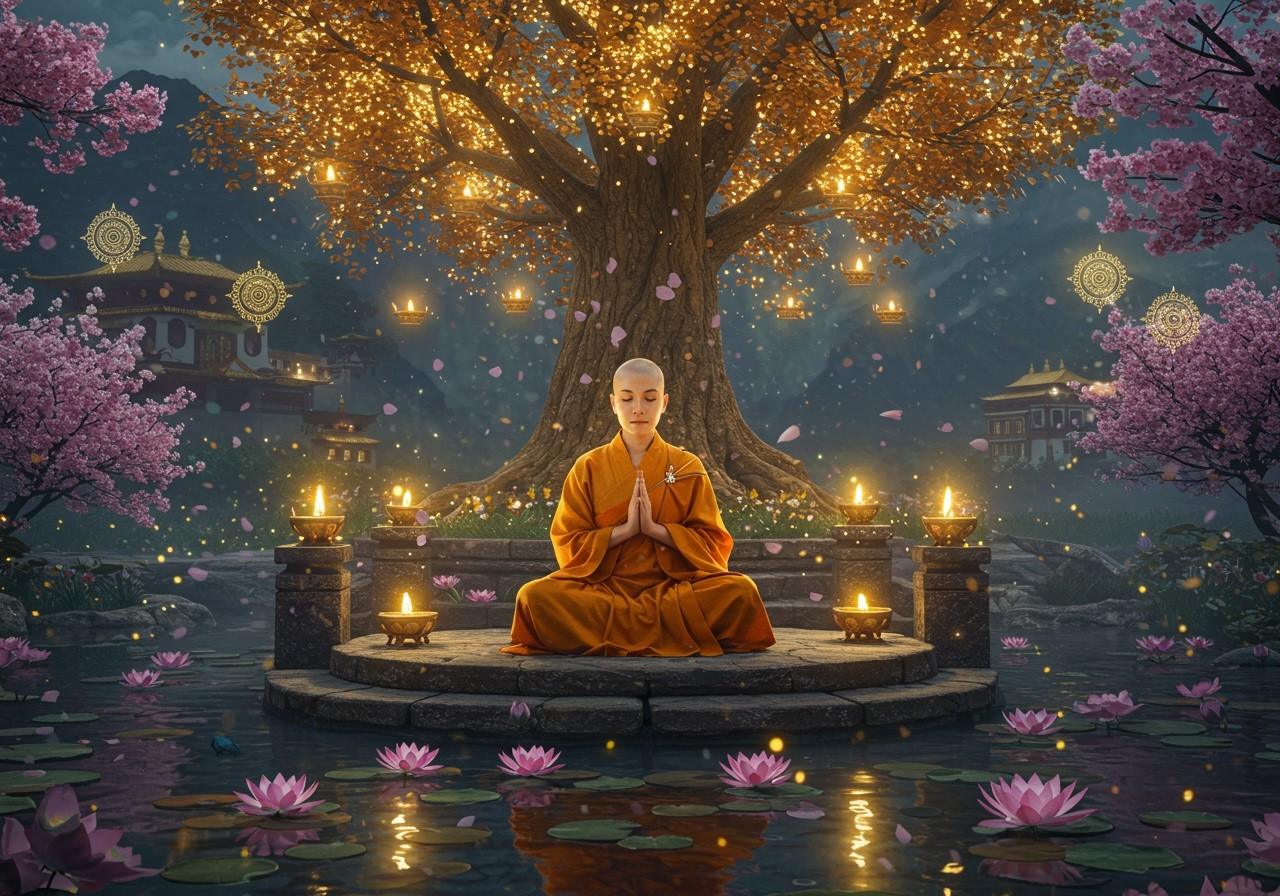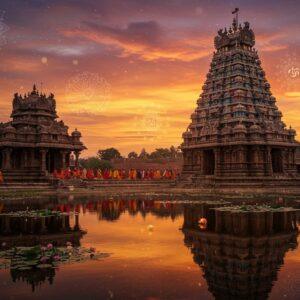
Explore the serene and disciplined world of Bhikkhunī, Buddhist nuns who dedicate their lives to spiritual growth and the pursuit of enlightenment. This guide delves into the life and practices of Bhikkhunīs, covering their daily routines, precepts, and the journey to becoming a Buddhist nun. This comprehensive guide will provide culturally rooted, middle to upper-middle-class Indians with valuable insights into the authentic traditions and rituals of Bhikkhunī life.
Historical Background of Bhikkhunīs
Understanding the origins of Bhikkhunīs and their role within the Buddhist monastic community is crucial. The history of Bhikkhunīs traces back to the time of Gautama Buddha, who established the order of nuns. Key figures like Mahapajapati Gotami, the first Bhikkhunī, shaped the Bhikkhunī Sangha’s development. In modern times, the revival of Bhikkhunī ordination has significantly impacted contemporary Buddhist communities, particularly in Theravada Buddhism where the lineage of fully ordained bhikkhunis died out in 456 CE. This revival faces challenges and reflects the unique worldview of these women.
Daily Life of a Bhikkhunī
The daily life of a Bhikkhunī is structured around spiritual practice and community living. Early morning alms rounds (Pindapata) are essential for receiving sustenance from the laity. Meditation practices and study sessions fill their days, fostering mindfulness and wisdom. Communal living arrangements, with senior nuns mentoring novices, create a supportive environment for spiritual growth. Chanting, rituals, and adherence to specific precepts maintain spiritual discipline. The simplicity and austerity of Bhikkhunī life emphasize detachment from material possessions and a focus on inner peace.
What Bhikkhunīs Wear
The traditional attire of Bhikkhunīs holds symbolic significance, reflecting their renunciation and commitment to the monastic path. The basic components include:
- Outer robe (Sanghati): This robe serves as the main outer garment, typically draped over the other robes. It is a symbol of their commitment to the monastic life and their separation from the secular world. The sanghati also provides protection from the elements and maintains modesty.
- Upper robe (Uttarasanga): Worn over the lower robe, the uttarasanga provides additional warmth and modesty. It is typically worn during formal occasions or when going outside the monastery. The way it is folded and draped is specific to different Buddhist traditions.
- Lower robe (Antaravasaka): This is the basic undergarment worn by Bhikkhunīs. It is a simple, practical garment that allows for ease of movement during meditation and other activities. The antaravasaka is usually made of a plain, unadorned fabric.
The robe-making process emphasizes simplicity and modesty. The robes are functional and durable, with variations in colors and styles across Buddhist traditions.
How to Become a Bhikkhunī
The path to ordination as a Bhikkhunī involves several stages and requires dedication and commitment:
- Prerequisites: Meeting specific requirements, such as age, health, and family consent, is essential. These prerequisites ensure that individuals are physically and mentally prepared for the demands of monastic life.
- Novice Stage (Samaneri): The initial stage involves becoming a novice (Samaneri) and undertaking specific training. This period allows aspiring Bhikkhunīs to learn the foundational principles of Buddhism and monastic discipline.
- Higher Ordination (Upasampada): The higher ordination ceremony (Upasampada) is guided by the Bhikkhunī Sangha. This formal ceremony marks the full acceptance into the Bhikkhunī order.
- Finding a Teacher and Community: Finding a suitable teacher and community is crucial for guidance and support. The support of a community and a mentor is essential for navigating the challenges and rewards of monastic life.
Commitment to precepts and lifelong dedication are paramount. The journey emphasizes spiritual growth and community.
How Poojn.in Supports Your Buddhist Practice
Poojn.in offers a wide selection of items for Buddhist practitioners, including those following the Bhikkhunī path. Explore our collection:
- Traditional Buddhist prayer beads (mala): Perfect for meditation and chanting, our malas are crafted from various materials like wood, seeds, and gemstones.
- Pure cotton robes and meditation cushions: Enhance your practice with comfortable and supportive cushions and clothing, ideal for long meditation sessions.
- Brass and copper offering bowls: Make offerings with reverence using our beautifully crafted bowls, available in various sizes and designs.
Visit www.poojn.in to see our full range of Buddhist supplies. We offer secure packaging and reliable delivery across India.
Conclusion
Understanding the life and practices of Bhikkhunīs offers a profound insight into the dedication and discipline of Buddhist nuns. This guide has explored their history, daily life, attire, and path to ordination. For those who value tradition, this knowledge is enriching and aligns with respect for authentic rituals and practices. Embrace the wisdom of the Bhikkhunī path and deepen your connection to Buddhism. With online resources like those available at Poojn.in, you can further explore and support the Bhikkhunī community, helping preserve these sacred traditions.


